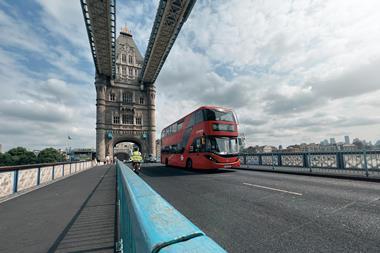UK - An advisory body to the Pension Protection Fund (PPF) has claimed the PPF levy would "feel fairer" to the pensions community if it targeted a bottom-up approach to risk calculations, so that risk reduction by a scheme is reflected in a lower levy.
The report from an independent steering group - set up by the PPF last year to help develop proposals for the long-term future of the PPF levy - suggested the "critical" proposition for the future is that changes to the levy for schemes should result from changes in individual risk and not from others' risk, so that it should be possible to estimate a levy for a number of years. (See earlier IPE article: PPF to set up steering group for revising levy plans)
Among its proposals - which will feed into the PPF's work on detailed plans for the new levy - the group suggested schemes could pay a levy reflecting their own risk characteristics, which are externally-benchmarked. These could include:
It also noted other characteristics for analysis which could potentially be added to the levy calculation are governance and funding strategy.
The steering group's report proposed a "bottom-up approach" to the levy - starting from the scheme level - might be the solution as opposed to the existing "top-down" approach where the PPF board sets a levy target - £720m (€806m) for 2010/11 - and risk measures are then scaled up or down at an individual scheme level, to meet the target.
It claimed a bottom-up approach would be fairer and more predictable but admitted without a fixed target the levy could be "pro-cyclical", making it more volatile at both scheme and overall level.
It suggested one solution to this problem might be for the risks to be assessed on a "through-the-cycle basis" rather than at one point in time. For example, insolvency risk could be an average over the economic cycle, with an allowance for years of high and low claims.
Meanwhile, research from Barnett Waddingham has revealed 90% of pension trustees and 62% of pension advisers do not believe the PPF should be funded solely by a pension scheme levy.
The survey of 150 respondents revealed while 86% support the existence of the PPF, 84% of trustees and 60% of advisers want the government to act as the ultimate guarantor. Findings showed only 14% of those surveyed felt the existing levy structure fairly shares costs between schemes. At the same time, 23% of trustees and 45% of advisers warned that the PPF levy could "seriously jeopardise the future existence of the employer associated with their scheme".
Nick Griggs, partner at Barnett Waddingham, said: "There appears to be some concerns about the way the PPF is funded. Its ever-increasing liabilities are becoming an unbearable burden on the declining number of eligible schemes. It is becoming apparent that there needs to be some alternative ways of supporting the protection afforded to scheme members or for the level of benefits provided by the PPF to be reviewed."
In the meantime, the PPF and CBI have published a joint guide on ‘How to reduce your pension protection levy' for pension schemes, advisers and trustees.
The guide provides information on how the existing levy is calculated and suggests 10 actions a scheme can take to reduce its PPF levy.
If you have any comments you would like to add to this or any other story, contact Nyree Stewart on + 44 (0)20 7261 4618 or email nyree.stewart@ipe.com












No comments yet